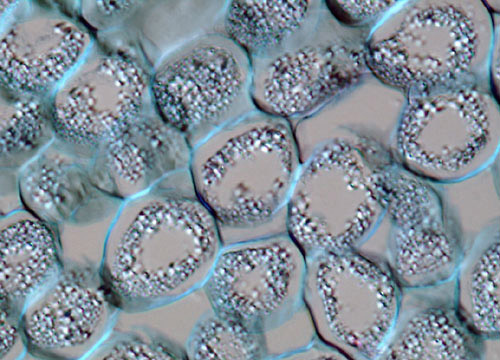Sweet Flag (Acorus) Rhizome
Acorus is the only genus in the plant family Acoraceae and its members are commonly known as sweet flag. Humans have utilized the grass-like perennial plants that grow in wetlands and around freshwater bodies for thousands of years.
 DIC
DIC
 Phase
Phase
Phase
Sweet flag plants have long, narrow, aromatic leaves, greenish brown cylindrical flowers, and roots that spread close to the surface of the soil. A thick subterranean stem, known as the rhizome, enables the propagation of sweet flag by producing shoots and root systems that develop into new individuals. The rhizomes of sweet flag plants also maintain food reserves and allow the species to survive cold winter weather, sprouting again the following spring.
DIC
In Ancient Egypt and the Far East, sweet flag rhizomes were believed to act as potent aphrodisiacs, but they have since been used for many other purposes. Once consumed as a candy by the Dutch, rhizomes of sweet flag plants have sometimes been employed to fight infectious diseases and to make products such as tea and dry shampoo. Other parts of sweet flag plants and their extracts enjoy a long history of utility, as well, especially as components of medicinal remedies. However, modern studies suggest that some sweet flag species have carcinogenic properties and, consequently, the plant extracts have been banned from products intended for human consumption by the Food and Drug Administration.













